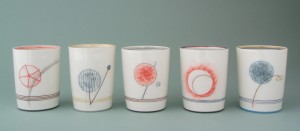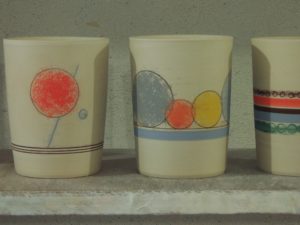I wouldn’t say that I have ever “hit the ground running”. I’m a slow burner; creative ideas take a long time to develop in my head, then take a long time to be realised, followed by lengthy periods of honing. As a result, our store room gradually accumulates experiments / prototypes / samples which for various reasons aren’t considered suitable for our website or any of the galleries we supply.
Usually we sell these “seconds” at our Open Studio in July, but of course, unfortunately, this year the event has been cancelled. We are all living differently, working differently and shopping differently, and so now (although they are sort of work in progress) my first generation brooches are available on our website shop.
I’m new to making brooches but old to working with clay and have found the combination of novelty / familiarity very favourable to creativity. Somehow it’s easy to be playful.

Some potential brooches, at greenware stage, before being fired.
I have many unanswered questions like “are they nicer glazed or un-glazed?” and “which shapes do I prefer: straight or curved edges?” The answers will probably come through making more. At the moment it doesn’t matter, I just need to put in the hours and let them evolve.
I would love to come up with a more elegant solution to the backs. I have used commercial brooch backs and araldite: strong and practical, but amateur.

brooch backs.
I will give half of the proceeds to the mental health charity, Mind. I’m aware of the huge strain lots of people are under at the moment, including our youngest daughter who had been recovering from anorexia but is now back in hospital.
My brooches have been joyful light relief for me during lock-down; I hope you’ve enjoyed seeing them.
Thank you for subscribing, reading and buying our work.
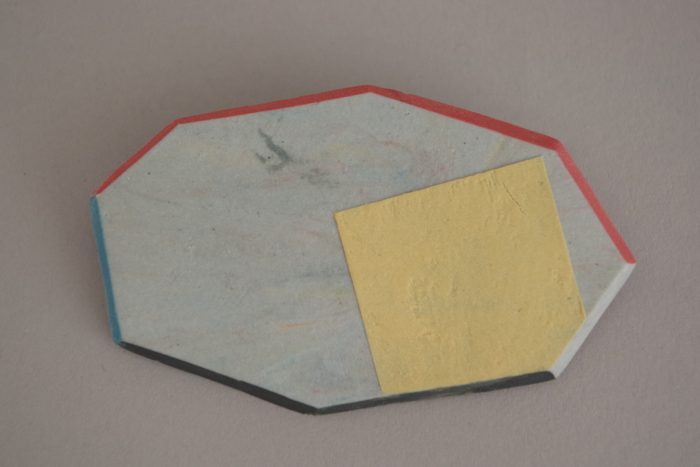
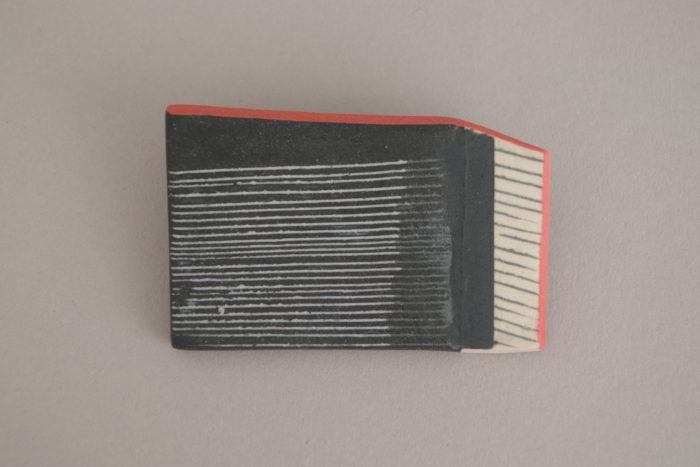






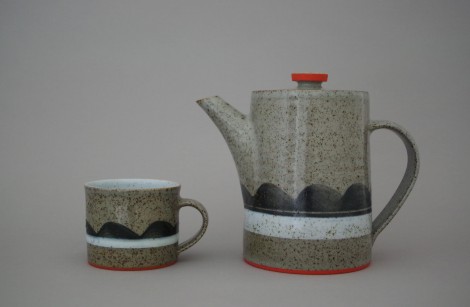


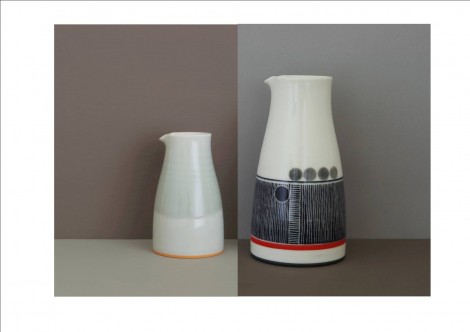
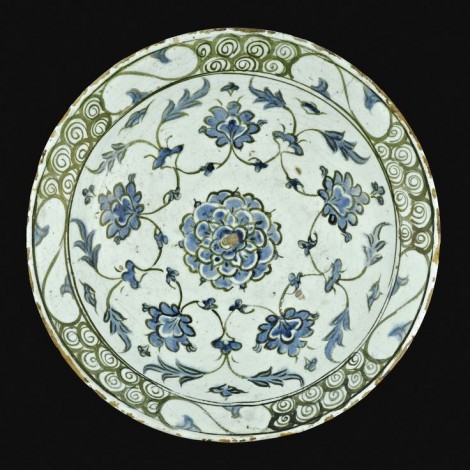

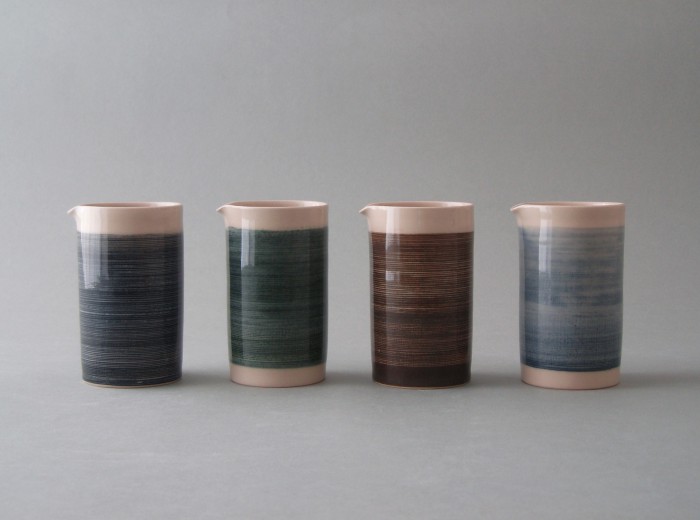
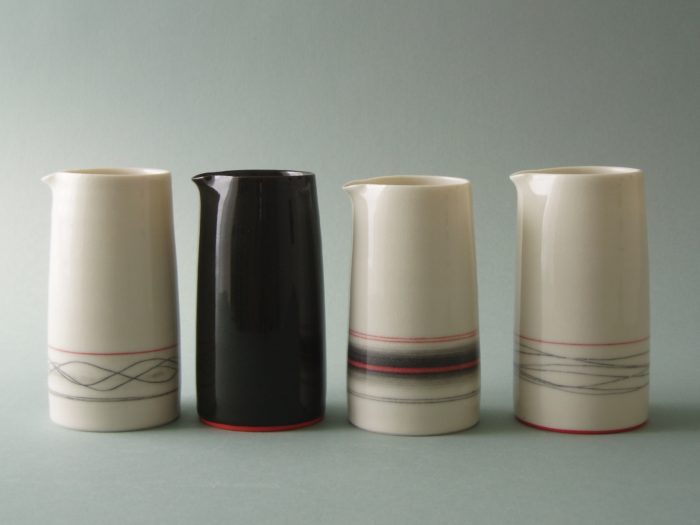
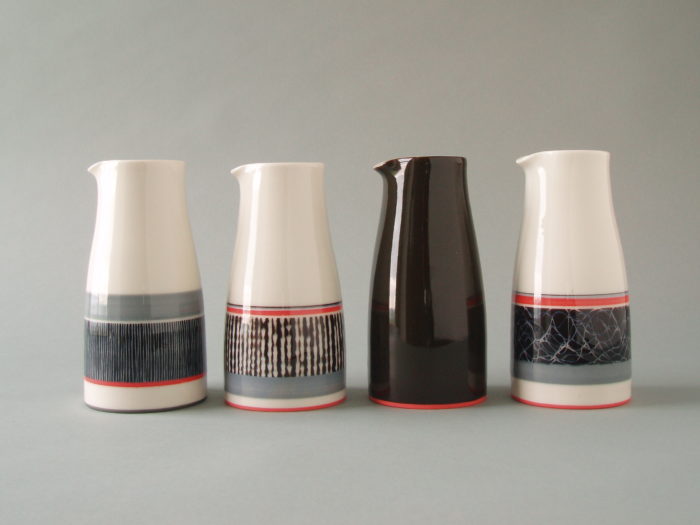
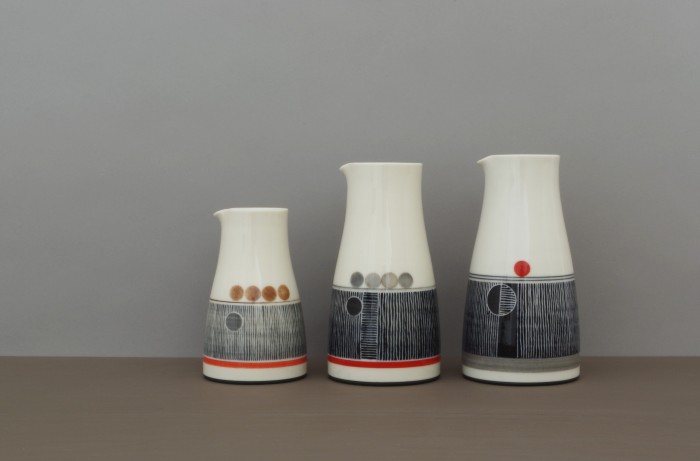
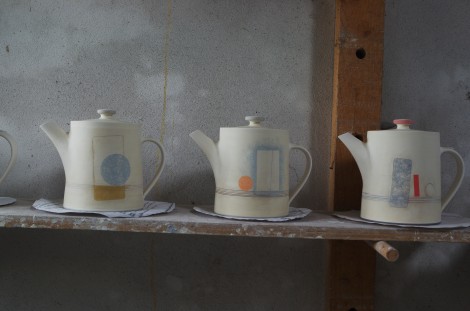
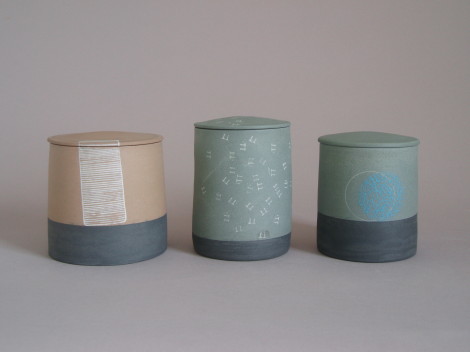
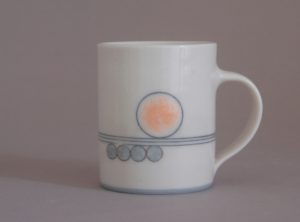
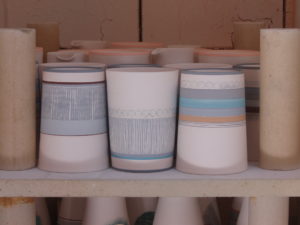
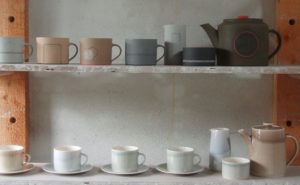
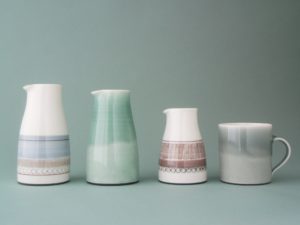 These are some pots we’re about to send to the Leach Pottery in St. Ives. Before they disappeared I wanted to record their nice quiet, neutral colours.
These are some pots we’re about to send to the Leach Pottery in St. Ives. Before they disappeared I wanted to record their nice quiet, neutral colours.